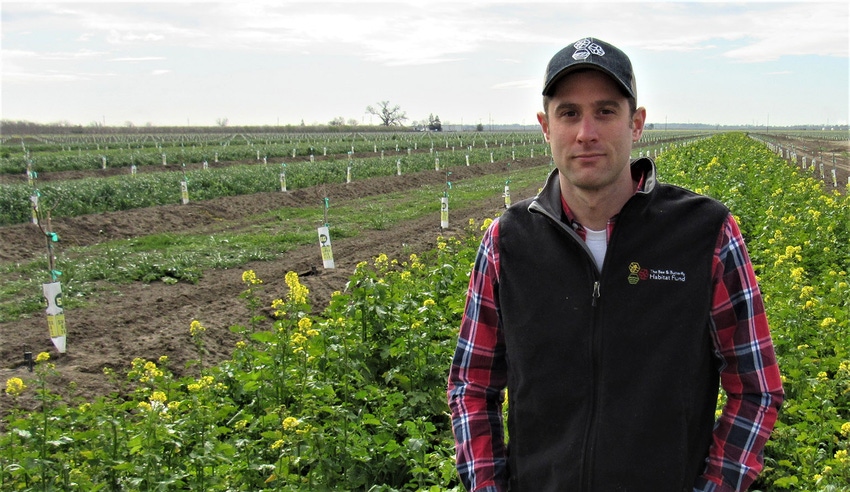
The alphabet is reversed in the nut industry with B coming before A — bees before almonds. Bees and other pollinators were recognized for their service to the industry by acclamation in June via a National Pollinator Week.
In honor of the 2020 event, Karen Ross, secretary of the California Department of Food and Agriculture noted, “Pollinators — bees, along with birds, butterflies, and bats — keep our agricultural systems productive.”
The Almond Board of California chose the recognition week to announce an affiliation with Pollinator Partnership to promote the importance of providing pollinators with nutritional forage.
The Board also announced the launch of a Bee+ Scholarship program in which it will provide free cover crop seed to 100 almond growers.
“Protecting and improving year-round honeybee health is critical to the success of every almond grower,” said Almond Board Chief Scientific Officer Josette Lewis. “Responsible farming is at the heart of what the California almond community does and this alignment will allow us to increase our support to growers committed to growing almonds in a better, safer, and healthier way, improving outcomes for pollinators.”
Funding provided by ABC’s Bee+ Scholarship will allow growers to plant an estimated 3,500 acres of quality pollinator forage statewide in addition to the cover crop seed typically distributed through the Seeds for Bees program.
“With a crop that relies primarily on honeybees for pollination, it is in almond growers’ best interest to ensure their orchards are a safe place for bees each spring,” noted Billy Synk, director of Project Apis m. Pollination Programs.
Shout-out to honeybees
This is the second major shout-out to honeybees this year, a follow-up to World Bee Day on May 20 when the pollinators got their accolades for superlative efforts during the almond orchard blooms this spring.
Almond pollen, at 25% protein, is nutritious for honeybees as it also contained the 10 amino acids that bee diets require. In foraging the blooms for pollen and nectar, they earn their keep by pollinating the blossoms. One report on this season’s bloom activity in the Central Valley indicated 1.5 million bee boxes were brought in to help with pollination.
And when the almond bloom winds down, migratory beekeepers fan out across the U.S. keeping their hives busy by pollinating a variety of crops from apples to sunflowers — in total, a third of the food we eat.
Because poor nutrition in honeybees is an underlying factor in colony loss as malnutrition amplifies pathogen, parasite, and pesticide problems, some USDA Agriculture Research Service entomologists are reporting a new food source — microscopic algae.
It’s called ‘spirulina’, single-celled organisms that are part of the family of blue-green algae, rich in essential amino acids and lipids required by bees in levels matching those found in tested pollen samples.
“Improving the efficacy of pollen substitutes is vital to modern beekeeping and our work is a pioneering first-look into the nutritional and functional properties of a single microalga — how it corresponds to what is needed in a complete pollen substitute for honey bees,” said ARS Honey Bee Breeding Research Laboratory scientist Vincent Ricigliano.
In a technical abstract on the subject, Ricigliano wrote: “Commercial beekeepers have become increasingly reliant on artificial pollen substitute diets to nourish colonies during periods of forage scarcity and to bolster colony size prior to pollination services, but these artificial diets may be deficient in essential macronutrients.”
Microalgae can be sustainably grown large-scale with minimal effort.
“It takes just shallow ponds, nutrient salts, and sunlight to produce highly-nutritious microalgae that will be attractive to bees and support colony growth.”
For more news on tree nuts as reported by growers and farm advisors, subscribe to the Tree Nut Farm Press e-newsletter.
About the Author(s)
You May Also Like




